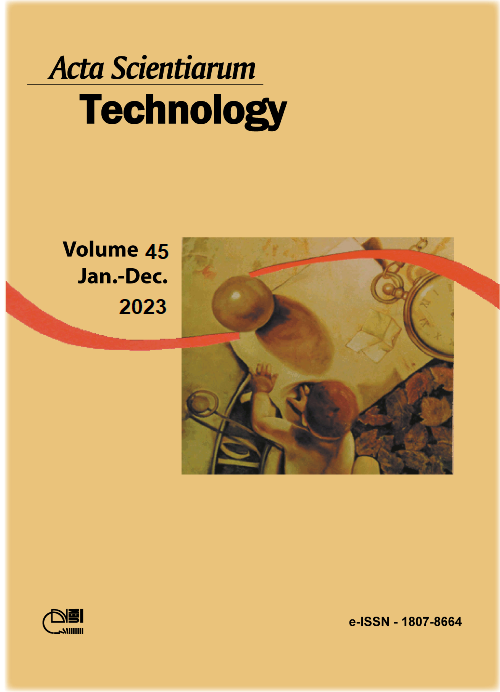Evaluation of feeding molar rate in mini fixed bed reactor for methanol steam reforming with pre-optimized composition of CuO/ZnO/Al2O3 catalyst
DOI:
https://doi.org/10.4025/actascitechnol.v45i1.60830Palavras-chave:
fuel cells; heterogeneous catalysis; CuO/ZnO/Al2O3 catalyst in composition optimized; fixed bed reactor.Resumo
Hydrogen gas is an ideal fuel due to its higher calorific value among fuels and minimal environmental impact on their energy applications. However, the high cost around high reactivity, explosion risks and extremely low energy density, make it unfeasible to be used as fuel in large quantities scale. There are some possibilities to circumvent these limitations, including obtaining and converting energy through fuel cells, which is very promising. Research in this field has been summarized in recent decades, motivated by the environmental problems faced due to the dependence on non-renewable energy matrices. From this, this study aimed to improve the steam methanol reforming using CuO/ZnO/Al2O3 catalyst. The catalyst was characterized by atomic absorption spectroscopy, N2 physisorption and XRD. Catalytic tests were carried out in a laboratory scale fixed bed reactor at 300°C, atmospheric pressure and in differential conditions (methanol conversion < 10%); a previous run for catalyst synthesis validation in relation to the results obtained in the literature for the same conditions was evaluated. Subsequently, it was found that the thermal degradation of methanol at 300°C without the presence of the catalyst was negligible, and then operational conditions were established to obtain methanol conversions lower than 10%. Then, the initial deactivation of the catalyst over 31h. Also identifying the stability after 7 h in reaction with average conversion into 9.7% of methanol, showing high stability, in addition to good reproducibility on the part of synthesis in optimal composition. Then, experiments were carried out for the molar ratios 2:1 and 4:1 with methanol conversions of 15.5% and 6.6%, respectively. Note that performing the average of the 4:1 and 2:1 methanol conversion in 14.6% obtained at indicating that the upper boundary molar ratios (4:1) compensates for the conversion reduction in 2:1, achieving a result superior to the reference 3:1.
Downloads
Downloads
Publicado
Como Citar
Edição
Seção
Licença
DECLARAÇíO DE ORIGINALIDADE E DIREITOS AUTORAIS
Declaro que o presente artigo é original, não tendo sido submetido í publicação em qualquer outro periódico nacional ou internacional, quer seja em parte ou em sua totalidade.
Os direitos autorais pertencem exclusivamente aos autores. Os direitos de licenciamento utilizados pelo periódico é a licença Creative Commons Attribution 4.0 (CC BY 4.0): são permitidos o compartilhamento (cópia e distribuição do material em qualqer meio ou formato) e adaptação (remix, transformação e criação de material a partir do conteúdo assim licenciado para quaisquer fins, inclusive comerciais.
Recomenda-se a leitura desse link para maiores informações sobre o tema: fornecimento de créditos e referências de forma correta, entre outros detalhes cruciais para uso adequado do material licenciado.















